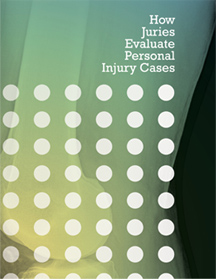Car accidents — Investigation — Hospital admission record
Hospitals create an admission record when you are admitted for treatment after a car accident, and your personal injury lawyer may need to obtain this record.
However, in many hospitals, separate departments maintain records in their own area. For example, rehabilitation records often are not kept as part of the general hospital record, X-rays may be kept in radiology, and hospital bills may be found in a different department.
Obtaining hospital records
Your personal injury lawyer will get your hospital admission record. However, to do this your lawyer may need certain identification information from you, such as your date of birth, social security number, and medical record number. Also, your lawyer will probably need a release of medical information form signed by you.
Obtaining the hospital admission record is usually a relatively simple task. However, because different hospital departments may have different records, you lawyer may need to make several separate requests to separate departments.
Depending on the length of stay, a hospital admission record can be an expensive item. If the entire record is not needed then your injury lawyer may be able to obtain a summary or abstract of the hospital record.
Content and uses of the hospital admission record
There are detailed histories throughout the chart as different specialists or staff physicians come in contact with you during your stay. Information of past injuries or pre-existing conditions surface from the more detailed parts of the chart.
The chart generally consists of the following:
- File jacket (This might not be photocopied when the record is transmitted)
- Administrative records (Including those beyond the treatment record)
- Admission sheet
- Discharge summary
- Patient consent forms
- Emergency room record
- Ambulance call sheet
- Progress notes (These contain daily or periodic entries made by the physicians as they see the patient on rounds.)
- Request for consultations
- Consultation reports
- Doctor’s orders sheets
- Medication charts (These document the time and amount of the administration of drugs)
- Vital signs</li>
- Fluid intake/output records
- Nurses’ notes (These are generally kept in their own section toward the end of the chart in most hospitals, although, in some institutions they are interspersed with the doctors’ notes in the progress reports.)
- X-ray reports
- Lab reports
Records of operations are in their own section and include:
- Anesthesia chart
- Operative report (Usually dictated and typed by the surgeon or a resident)
- Recovery room records (Chronicling the immediate post-op care)
- Pathology department reports



